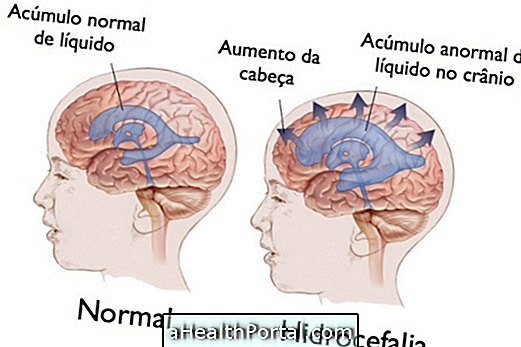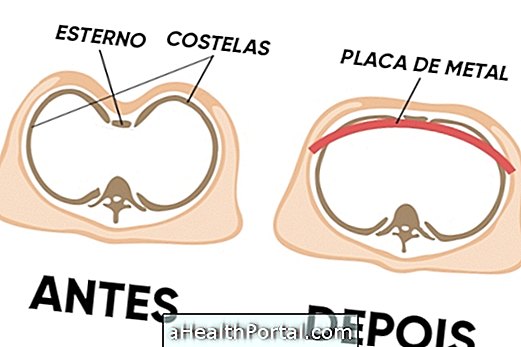Hydrocephalus is a condition characterized by the abnormal accumulation of fluid inside the skull that leads to swelling and increased pressure of the brain due to brain infections such as meningitis, brain tumors or birth defects, for example.
This fluid, called cerebrospinal fluid (CSF), involves the brain and spinal cord and has the function of protecting it. However, when there is a blockage to the passage of fluid, an increase in fluid production or a malabsorption thereof, hydrocephalus occurs which, although more frequent in children, may also occur in adults or the elderly.
Hydrocephalus has no cure, however, can be treated and controlled through surgery to drain fluid and relieve pressure in the brain. When left untreated, hydrocephalus sequelae may occur as a delay in physical and mental development, paralysis, or even death in some cases.

Types of hydrocephalus
The types of hydrocephalus are related to the causes of hydrocephalus and include:
- Fetal or congenital hydrocephalus: occurs in the fetus, due to genetic factors leading to malformation of the central nervous system, due to the ingestion of drugs by pregnant women during pregnancy or infections in pregnancy, such as toxoplasmosis, syphilis, rubella or cytomegalovirus;
- Hydrocephalus Child: acquired childhood and can be caused by brain malformations, tumors or cysts that cause obstruction, and is called obstructive or non-communicating hydrocephalus, due to bleeding, bleeding, trauma or central nervous system infections, such as meningitis causing an imbalance between CSF production and its absorption, being called communicating hydrocephalus;
- Normal Pressure Hydrocephalus: occurs in adults or elderly people, mainly from 65 years of age due to cranial trauma, stroke, brain tumors, hemorrhage or as a consequence of diseases such as Alzheimer's. In these cases, there is malabsorption of CSF or overproduction.
Therefore, it can be said that hydrocephalus does not always have a cure because the treatment varies according to the type and cause of hydrocephalus.
Symptoms of infant hydrocephalus
Symptoms of hydrocephalus vary according to age, amount of fluid accumulated, and lesions caused in the brain.
| Under 1 year | With more than 1 year |
| Larger than normal head | Headache |
| Dilated head and veins | Difficulty in walking |
| Rapid skull growth | Spacing between eyes and strabismus |
| Difficulty in controlling the head | Loss of movement |
| Irritability | Irritability and mood swings |
| Eyes that seem to look down | Slow growth |
| Epileptic seizures | Urinary incontinence |
| Vomiting | Vomiting |
| Somnolence | Learning, speech and memory problems |
The main symptoms of hydrocephalus in adults or elderly people are difficulty walking, urinary incontinence and progressive loss of memory. In adults or elderly there is no increase in head size because the skull bones are already developed.
Treatment of hydrocephalus
The treatment of hydrocephalus can be done with surgery to drain the CSF into another part of the body, such as the abdomen, for example, neuroendoscopy, which uses a thin apparatus to relieve the pressure of the brain and circulate the liquid or medicines to avoid overproduction of CSF.
In addition, there are other surgeries that can be done to treat hydrocephalus, such as surgery to remove tumors or parts of the brain that are producing too much CSF. Therefore, depending on the cause, the neurologist is the one who should indicate the appropriate treatment.

The earlier treatment is given for hydrocephalus, the slower the sequelae as a delay in physical and mental development, for example, which may be minimized with physical therapy. A common condition where the child is born with hydrocephalus is in case of myelomeningocele.
























